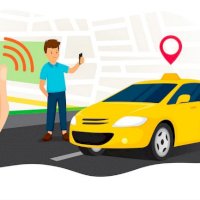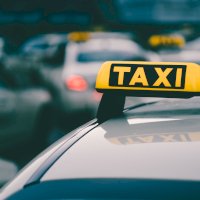Having transportation service is vital no matter what area you live in. Since it affects the economic, social and personal well-being of people, this is usually the case in rural areas. This lack leaves many people with no other option than to use private, single-occupant vehicles.
This situation has become worrying, worldwide 3.4 billion people, 43.4%, live in rural areas. Resulting in even the simplest journey being a challenge for a considerable portion of the population. There is no quick fix for this, this is where Mobility as a Service comes into the equation.
The problems of rural mobility
In order to think of a solution I agreed, we must first review the reasons why mobility becomes complex in these regions. It is often due to a lack of infrastructure, such as poor roads or railways. Others are due to the poor economic viability of transportation providers due to the dispersion of the population.
These factors directly influence the price of public transportation. The World Economic Forum comments that 85% of rural bus operators do not break even. The problem is compounded by the lack of publicity about transportation options. People don't know what time they leave, if there are delays or if they are cancelled.
Adapt MaaS to the rural transport service
A problem like this requires unity, between authorities, organizations, now adding app technology providers. It will depend on what level of rurality the area has, because we know that the city alternatives may not work in these cases. Of course, always seeking sustainability and benefit of the inhabitants of the communities.
The positive thing is that solutions with MaaS are being sought all over the world. The UITP suggests combining public transport service with taxis and shared booking. Their RIDE2RAIL project set out to create a framework for multimodal transportation. In Belgium, the Mobitwin volunteer service provides transportation to those who have difficulty getting around for various reasons.
Other possibilities that help the cause
This type of services that are being proposed has great potential and is a lifesaver for many residents. The omnipresence of mobile devices is the missing piece to be able to inform everyone. Be able to use technology to group transportation alternatives, in addition to the following details.
-
Active displacements.
-
What vehicles are available.
-
Plan travel chains, that is, what means of transportation you need to combine to reach your destination.
-
Information about delays.
-
Traffic conditions or external agents.
-
Route changes.
The ability to have transport planning, booking and payments within the app would also help make things easier. In fact, trip planning apps could support different pricing strategies based on rural needs.
The difficulties of technology
We all know that technology has opened doors that 50 years ago would have seemed like science fiction. But, it is also a reality that in these rural communities not everyone has access to or knowledge about apps. Which makes them less likely to adopt new transportation service options .
Administrations and community organizations would have to offer facilitators who can be contacted as mediators. Although it is worth mentioning that talks to train people with less knowledge are a feasible option.
Prices and rates for service
We know that adapting these Mobility as a Service solutions is not an easy task. Since it mostly depends on feasible mobility options, local government policies and financing. This is when the cost proposals that are applied to special cases come in. How to give free tickets or reduced prices per trip to:
-
Families with low income.
-
Students who go to their universities, colleges or jobs.
-
Older adults.
These types of subsidies are not losses, rather they could help the use of fixed or dynamic public transport. As long as P2P or community services are included for the first/last mile.
Uber-rural in initiatives
It was to be expected that the taxi giant was not going to be left out in the initiatives for a new niche and areas. The proposal arises in Navarra, Spain that, through the creation of an app or social networks, access to mobility opportunities is given. It would be about finding connection mechanisms between neighbors that allow sharing vehicles to access the municipalities.
At the same time, support for the establishment of new social and sustainable business models is also proposed. That can solve the difficulties of accessing broadband Internet in rural areas. Likewise, try to promote the creation of affordable and non-polluting rural energy communities. Along with the creation of entrepreneurship and social innovation ecosystems.
Approach from all fronts
Ultimately, only if the necessary measures are taken will citizens in rural areas have the mobility options they need. In order to prosper and, in this way, keep people in their jobs and educational institutes. If, as a transportation service, you are familiar with MaaS and want to help these areas, you can now take advantage of this new revolution.






